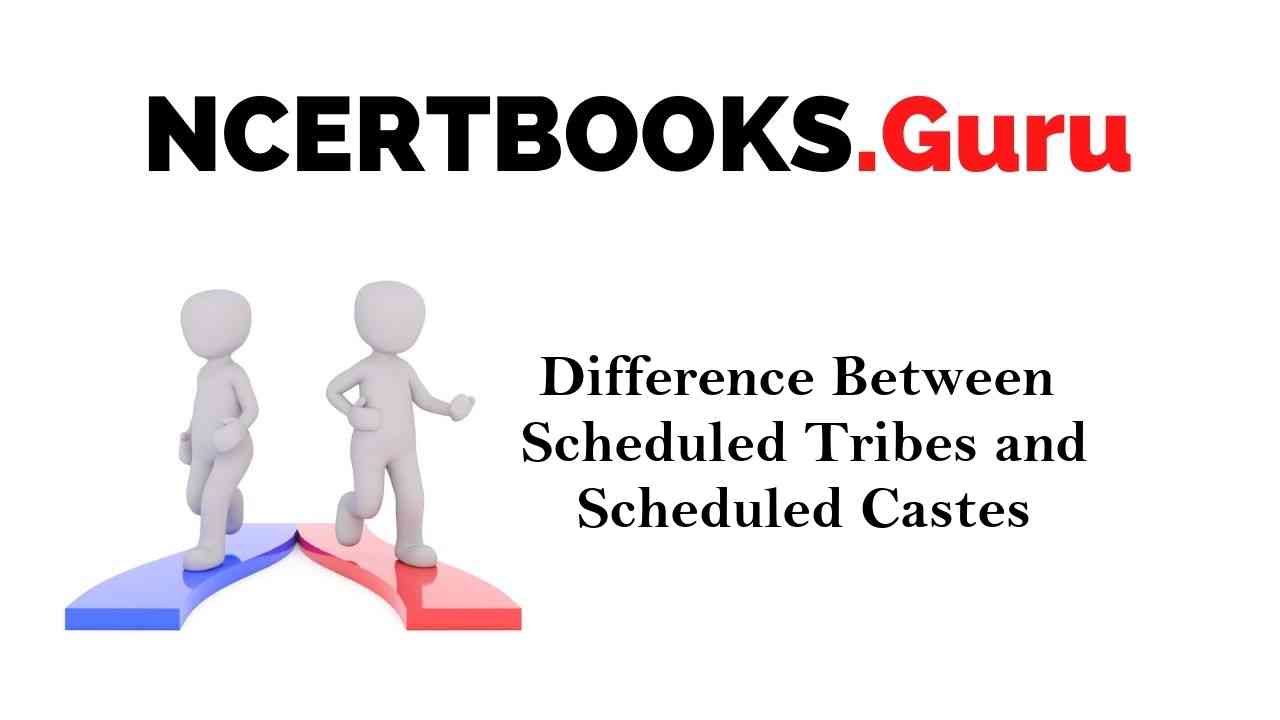Scheduled Tribes and Scheduled Castes: The Scheduled Caste (SCs) and Scheduled Tribes (STs) are officially assigned groups of people of India. These terms are identified in India’s Constitution and the groups are nominated in one or other of the categories. During the time of British rule in the Indian subcontinent, they were recognised as the Depressed Classes.
You can also find differences between articles on various topics that you need to know. Just tap on the quick link available and get to know the basic differences between them.
What is the Difference between Scheduled Tribes and Scheduled Castes
In modern literature, the Scheduled Castes are seldom introduced as Dalit, meaning “scattered or broken” in Sanskrit, popularised by B. R. Ambedkar, the economist, reformer, chairman of the constituent assembly of India, and Dalit leader during the independence struggle. Scheduled Tribes (STs), also known as Adivasis or tribal groups – are socially prohibited in India, suffering discrimination based on their ethnicity.
According to census 2011, STs make up 8.8 percent of India’s population, and the SCs make up to 16.6% of India’s population. Since India’s independence, the Scheduled tribes and Scheduled Caste were given reservation status, ensuring political representation. The Constitution sets the general principles of positive discrimination for SCs and STs.
Scheduled Tribes
Scheduled Tribes (STs), also known as Adivasis or tribal groups – are socially prohibited in India, suffering discrimination based on their ethnicity. The Scheduled tribes are varied in terms of their political and socio-economic development. They belong to various economic, racial, linguistic, social and religious categories. Adivasis or ST generally live in isolated forest areas, enduring solely on the forest environment. Their remote territories and language boundaries make it tough to communicate with health workers who often hold negative cultural stereotypes about them.
Scheduled Caste
Scheduled Castes (SCs), popularly identified as Dalits, are culturally and socially eliminated in India, facing discrimination based on their position at the bottom of the Indian caste system. SCs find themselves eliminated from many day-to-day life phases, including health services, economies and educational endowments. Children from SCs seldom grow beyond the primary level. Their discrimination includes – forced to sit alone, clean toilets and not being provided school uniforms and books.
Difference Between Scheduled Tribes and Scheduled Castes
| Scheduled Tribes | Scheduled Caste |
| Article 342 of the Indian Constitution defines who would be Scheduled Tribes with respect to any State or Union Territory. | Article 341 of the Indian Constitution defines who would be Scheduled Castes regarding any Union or StateTerritory. |
| As per the 2011 census, the population percentage as Scheduled Tribes in the States of Punjab and Haryana was at 0%. | As per the 2011 census, the population as Scheduled Castes in India is 3 North Eastern States and Island territories |
| The Scheduled Tribes 1950, records 744 tribes across 22 states in its First Schedule | The Scheduled Castes 1950, records 1,108 castes across 28 states in its First List. |
| The National Commission for Scheduled Tribes’ main functions are to examine and observe all matters associated with the Scheduled Tribes’ protection under the Constitution. | The National Commission for Scheduled Castes’s main purposes is to review and observe all elements relating to the Scheduled Castes’ safeguards under India’s Constitution. |
| The Scheduled Tribes National Commission is an Indian Constitutional body set during the 89th Constitutional Amendment Act, 2003 under Article 338 A. | The Scheduled Castes National Commission is an Indian Constitutional body built to defend the social, economic, educational, and cultural concerns of people belonging to Scheduled Castes. |
